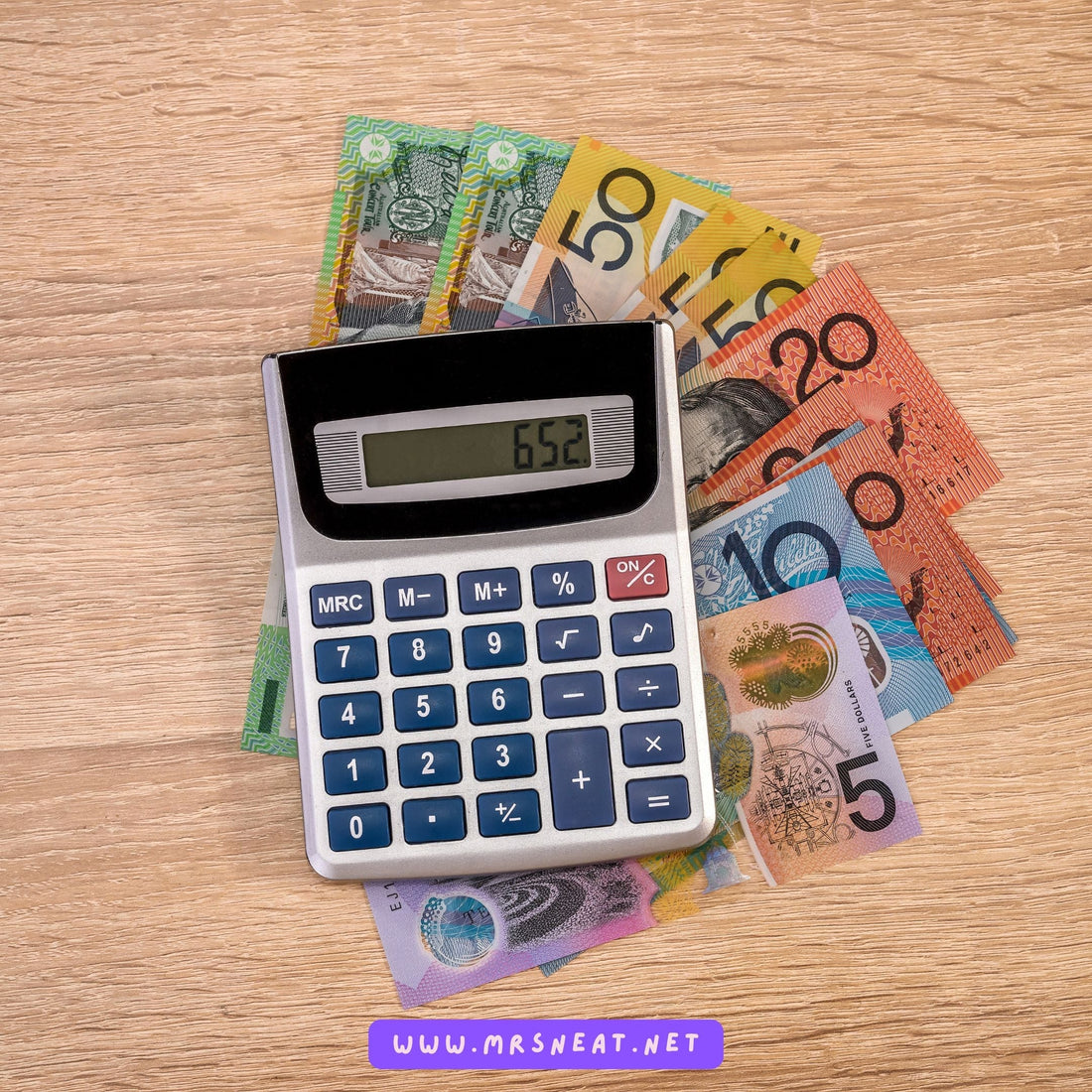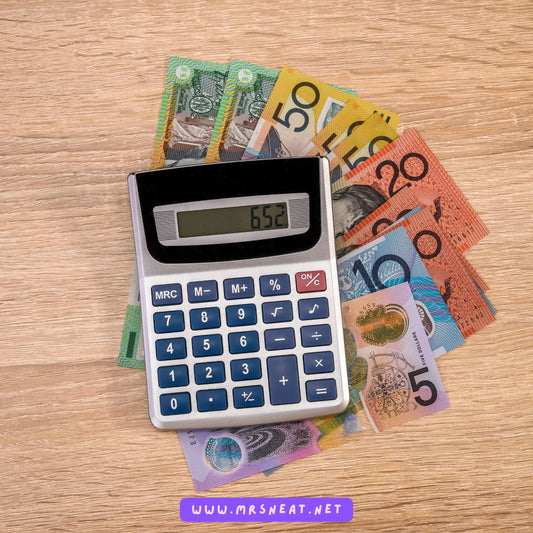
How I Saved $5,000 in 6 Months with a Budget Planner Template
maris wariShare
Have you ever had that moment where payday feels amazing—your bank account finally looks healthy—and then just a week later, you’re staring at your balance wondering, “Wait… where did all my money go?”

That was me. Over and over again.
My daily Starbucks run, late-night Amazon “deals,” Uber Eats on nights I was too tired to cook—it didn’t feel like much in the moment.
But when I added it all up? It was shocking.
It wasn’t that I didn’t make enough money—it was that I wasn’t paying attention to where it went.
I didn’t want a complicated budgeting app with a million features I’d never use.
I wanted something simple, clear, and honest. That’s when I found the Budget Planner Template.
Think of it as more than just a spreadsheet or piece of paper—it became my accountability partner.
A place where I could track my income, log every expense (yes, even the $5 lattes), plan my savings goals, and finally stop living paycheck to paycheck.
And here’s the wild part: with just a little consistency and discipline, this template helped me save $5,000 in just 6 months.
No second job, no extreme sacrifice, no financial “hacks” that only work for millionaires. Just a real system that worked for me.
In this blog, I’m going to share exactly how I did it—the good, the hard, and the surprisingly fun parts.
Ready to see how a simple Budget Planner Template can change your finances?
Let’s start with the backstory: Why I Needed a Budget Planner Template.
Why I Needed a Budget Planner Template
Before I discovered the Budget Planner Template, my financial life was a mess—like, the kind of mess you avoid opening your banking app for because you already know it’s going to give you anxiety.
I wasn’t broke-broke. I had a steady job, I paid my bills, and I even had a little “fun money.”
But the truth? I had zero control.
Here’s what my months looked like back then:
- Payday high → I’d feel rich for about 72 hours. Groceries? Swipe. Dinner out? Why not? Cute shoes on sale? Add to cart.
- Mid-month panic → Suddenly, my card would get declined at Target and I’d be thinking, “Wait…didn’t I just get paid?”
- End-of-month stress → Bills would hit, overdraft fees would creep in, and I’d promise myself, “Next month I’ll do better.” Spoiler: I never did.
What made it worse is I tried other methods. I downloaded a couple of budgeting apps, but I never stuck with them.
They were either too complicated, too boring, or too easy to ignore.
I even tried tracking my spending in the Notes app on my phone—but guess how long that lasted? (About three days.)
The real problem was this: I didn’t have a system that was both simple and visible.
I needed something I could stick to daily, something I couldn’t just swipe away like a notification.
When I stumbled on the Budget Planner Template Printable, it felt different.
It was straightforward, customizable, and—this was key—it was visual.
Having everything laid out on paper (or in a simple printable PDF I could reuse) gave me clarity.
For the first time, I wasn’t just thinking about money, I was actually seeing where it went.
And that was the turning point. I realized I didn’t have an income problem—I had a planning problem.
Once I fixed that with the Budget Planner Template, everything else started falling into place.
Setting My $5,000 Goal
Once I got my hands on the Budget Planner Template, I knew I needed a concrete goal—something bigger than just “save money.”
Because let’s be real: if your only plan is “spend less,” it won’t last longer than a week.
So I asked myself: What do I actually want?
At that time, I had two things on my mind:
- I wanted an emergency fund so I wouldn’t spiral every time my car needed a repair.
- I wanted to finally prove to myself that I could save a serious chunk of money.
That’s when I landed on the magic number: $5,000 in six months.
Why $5,000?
- It felt big enough to be exciting and motivating.
- But also realistic enough to hit if I got serious.
- Plus, $5,000 meant I could cover at least 3 months of basic expenses if life threw me a curveball.
Next, I broke it down using the Budget Planner Template. Here’s how:
- $5,000 ÷ 6 months = about $834 per month
- $834 ÷ 4 weeks = about $208 per week
Seeing the numbers this way was game-changing. Saving $5,000 felt overwhelming. But saving $208 a week? Totally doable.
That’s basically skipping one night out, cutting back on impulse Amazon buys, and cooking at home a little more often.
To keep myself motivated, I wrote my goal in big letters at the top of my Budget Planner Template:
“$5,000 by [date]—Future Me Deserves This.”
It sounds cheesy, but trust me: putting your “why” in writing makes all the difference.
Every time I was tempted to spend on something random, I’d see that note and remind myself, “Is this worth delaying my $5,000 win?”
And honestly? It worked.
For the first time, I wasn’t just hoping to save money—I had a clear timeline, clear numbers, and a system that kept me accountable.
That goal turned into my north star. Every dollar I tracked, every choice I made, pointed back to that $5,000 target.
And by breaking it down weekly inside the Budget Planner Template, the impossible suddenly felt…possible.
Breaking Down My Paycheck with the Template
The biggest shift happened when I stopped “winging it” with my paycheck and actually assigned every dollar a job using the Budget Planner Template.
Here’s how it went:
Step 1: Write Down My Income
Every two weeks, I’d sit down with my planner and write my paycheck amount at the top. Let’s say it was $1,500.
Before, that money would’ve just disappeared little by little—coffee runs here, Target trips there.
But now? It had structure.

Step 2: Fixed Expenses First
I listed my non-negotiables:
- Rent: $650
- Utilities: $120
- Car payment: $220
- Insurance: $95
- Subscriptions (Netflix, Spotify, etc.): $30
Total: $1,115
With that written down, I knew exactly how much “freedom” I had left. No surprises when bills hit.

Step 3: Savings Next (Non-Negotiable Rule)
Here’s where the Budget Planner Template made me ruthless (in a good way). I put savings right below expenses—before food, before fun.
From each paycheck, I moved $400 straight into savings.
Why? Because that was the number I needed to stay on track for $5,000 in six months.
The trick? Treating savings like rent.
You’d never skip rent, right? So why skip paying future me?

Step 4: Budget for Daily Life
Now I had $1,500 – $1,115 – $400 = -$15 (oops). At first, it didn’t balance, and that’s where the magic happened—I could see the problem instantly.
Instead of going negative without noticing, I tweaked:
- Cut subscriptions from $30 to $15 (goodbye, random trial services).
- Planned groceries at $150/week but reduced to $120 with meal prepping.
- Trimmed fun money from $150 to $100.
Suddenly, my budget balanced. The template made me face the numbers instead of ignoring them.

Step 5: Track Daily
I kept a column for actual spending. Example:
- Budget: $100 fun money
- Reality: $87 (two movie nights + Starbucks splurge)
At the end of the week, I could celebrate staying under or notice patterns (like: “Wow, Starbucks is eating my money alive”).
The Breakthrough:
Before, I thought budgeting was about restricting myself. But with the Budget Planner Template, I realized it was about freedom with boundaries.
I still went out, still had my lattes, but without the guilt because everything was accounted for.
That paycheck system—income → fixed expenses → savings → daily life—became my rhythm.
And honestly? That’s what got me to $5,000 faster than I thought possible.

My 6-Month Journey
When I promised myself I’d save $5,000 in six months, it felt bold—and a little scary. But promises are easier to keep when you have a map.
My Budget Planner Template became that map.
Here’s exactly what I did month by month, the small wins and the moments I almost quit, plus the tiny changes that made the biggest difference.
Month 1 — Reality Check: Track Everything (Shockingly Useful)
The first month was all about truth-telling.
I printed the Budget Planner Template, grabbed receipts, and logged every single spend—from rent and utilities to the $3 gum at the checkout.
I wrote down recurring items (streaming services, gym membership) and the sneaky stuff (late-night snack runs, impulse Amazon buys).
Seeing it all in one place was brutal but freeing. I realized my baseline: how much my fixed expenses ate up, and how much leaked out on small, repeat purchases.
Coffee runs, takeout, and “just one more” packages were silently stealing my savings. That visual shock was my fuel.
I set aside the baseline numbers and knew exactly how much I had to free up to meet the goal.
Tactic: Use the template to create a true snapshot. Track for a full month before making changes—data beats guesswork.
Month 2 — Goal Setting & Automatic Savings
Armed with Month 1 clarity, I set the math in the template: $5,000 ÷ 6 ≈ $834/month (about $208/week).
Instead of hoping I’d remember to save, I automated it.
On every payday, $400 (from biweekly paychecks this was my split) went instantly to a separate savings account I could’t touch easily.
On the planner I highlighted “savings first” in bold.
That mental cue mattered. When money never hit my checking account, I stopped treating it like spendable cash—psychology trick working in my favor.
Tactic: “Pay yourself first” by automating transfers. Put the number in your Budget Planner Template so it’s non-negotiable.
Month 3 — Small Sacrifices, Big Impact
By month three, the routine felt real—but the temptation was still there. This month I deliberately trimmed small, repeat expenses that added up:
- Brought coffee from home 4 weekdays a week: roughly $5 saved/day → $100/month.
- Cut takeout from $150/week to $50/week by meal-prepping two dinners: $400/month → $200/month saved(example).
- Canceled two low-use subscriptions: $30/month.
I logged these changes in my Budget Planner Template and watched the balance between “planned” and “actual” shift in a good way.
Seeing the new numbers made it easy to stick to them.
Tactic: Don’t remove joy—reallocate it. Keep a small “fun” allowance in the template so you don’t rebel.
Month 4 — Gamify the Process
Month four was when I made saving feel fun.
I color-coded the template (savings = green, essentials = blue, fun = yellow) and created a progress bar on the sheet: each $500 saved got a big star.
I also introduced a weekly check-in—30 minutes on Sunday—where I updated the template, compared planned vs. actual, and gave myself a tiny reward if I stayed under budget (a fancy tea, a new nail polish, a $10 splurge).
This gamified approach kept me emotionally invested.
The visual progress on the Budget Planner Template became addictive in the best way.
Tactic: Visual rewards + weekly check-ins create momentum. Use your template like a scoreboard.
Month 5 — Momentum & Smart Tweaks
At five months in, savings momentum made decisions easier.
I started optimizing: grocery lists based on sale cycles, batch-cooking that doubled for lunches, and being strategic about bigger spends (waiting for planned “purchase windows” on the template).
I also moved the growing balance into a high-yield savings account so the money worked a little harder.
On the Budget Planner Template I noted upcoming seasonal costs (insurance renewal, birthdays) and adjusted the weekly target slightly when needed.
Flexibility kept me sane.
Tactic: Optimize routine expenses and park savings where they earn more. Use the template to forecast seasonal costs.
Month 6 — Finish Line: The Feeling of Financial Power
Month six was equal parts disbelief and celebration.
The stars on my progress bar were full, the automated transfers had stacked up, and the little lifestyle changes compounded.
I crossed the $5,000 mark and sat there for a minute, stunned and proud.
What I did with the money: paid down a small credit card balance, topped up my emergency fund, and set aside a chunk for a guilt-free mini trip.
The Budget Planner Template helped me allocate the lump sum intentionally instead of splurging it away.
Tactic: Plan post-goal allocations in your template before you hit the target—so you don’t spend emotionally.
What Actually Made the Difference
- Data first: Month 1 tracking showed where leaks were.
- Automate savings: “Pay yourself first” made saving painless.
- Small, repeatable cuts: Coffee, takeout, and subscriptions were the low-hanging fruit.
- Weekly ritual: A 30-minute check-in kept momentum.
- Visual motivation: Color-coding and progress markers turned saving into a game.
If you take away one thing from my six months: consistency > perfection.
The Budget Planner Template wasn’t magic. It was structure, honesty, and small, repeatable decisions that added up.
Do that, and the $5,000 becomes not a fantasy, but a plan you can follow.
Hacks That Helped Me Save
Saving $5,000 in six months didn’t happen by accident. It wasn’t about living on rice and beans or cutting out every fun part of my life.
Honestly, it was about finding creative, doable hacks—little strategies that made saving feel realistic and even enjoyable.
These were the game-changers I used alongside my Budget Planner Template, and I swear they made all the difference.
1. The 24-Hour Rule (Bye-Bye Impulse Buys)
I used to be the queen of impulse shopping—Target runs, late-night Amazon scrolling, you name it.
So I created a simple hack: if I wanted something, I wrote it in my Budget Planner Template “wish list” section and waited 24 hours.
Nine times out of ten, the “need” faded away.
This hack alone saved me at least $200 in random Amazon boxes over six months.
And the cool part? Seeing those almost-purchases on paper reminded me how much money I was actually keeping.
2. Cash Envelope for Fun Money
Digital spending made me blind. So I went old-school: cash envelopes. I set aside $50 a week for “fun” money—coffee, movie nights, treats.
When the envelope was empty, fun was done until the next week.
This simple hack kept me accountable without feeling restrictive.
Instead of accidentally blowing $120 on takeout, I chose experiences more carefully.
Plus, it felt kinda satisfying pulling bills out of an envelope instead of swiping a card.
3. Automate Like Crazy
The most boring but most powerful hack? Automation.
Every payday, I set up my bank to instantly move $400 into a savings account labeled “Do Not Touch.”
Because it happened automatically, I didn’t rely on willpower.
The Budget Planner Template helped me visualize this—every payday line had a bold green “savings” entry.
Seeing it written down made it stick in my head: that money wasn’t mine to spend.
4. Swap Starbucks with DIY Café Moments
Okay, I’ll admit it: I love Starbucks. But those $6 lattes? Deadly for savings.
Instead of quitting cold turkey, I hacked it. I bought flavored syrups and a milk frother at home.
Every morning, I made a DIY latte, poured it into my favorite tumbler, and pretended I just swung by Starbucks.
Result: I still had my ritual, but I saved around $100/month.
I logged the difference in my template as “Starbucks Swap” savings. Watching it add up gave me an extra dopamine hit.
5. The Grocery Master List
Groceries used to be chaotic—I’d wander aisles, toss in random snacks, and walk out $150 lighter.
My hack: a reusable “master grocery list.” I built it once, stuck to it weekly, and added planned meals only.
I paired it with the Budget Planner Template’s “variable expense” column.
The predictable totals made me feel in control, and by cutting the random snackers, I saved around $60–$80 per week.
6. Free Entertainment Challenge
For one month, I told myself: “no paid entertainment.” No movie theaters, no concerts, no $40 escape rooms.
Instead, I leaned on free stuff—library books, YouTube yoga classes, park walks, free museum days.
It wasn’t as glamorous, but I found myself actually having fun.
My partner and I even had “free date nights” where we cooked together and watched a library DVD.
That one month saved me nearly $300. And because it worked, I kept repeating it every other month.
7. Declutter & Sell Challenge
This was a two-for-one hack: I decluttered my closet and sold unused stuff online.
Clothes I hadn’t worn in a year? Gone.
Kitchen gadgets I forgot I owned? Listed.
In three weekends, I made around $350. I wrote the deposits into my Budget Planner Template’s “extra income” section.
That little side boost accelerated my savings more than I expected.
8. Celebrate with Free Rewards
Old me would celebrate a win (like hitting $1,000 saved) with… spending.
Counterproductive, right? So I hacked the system: I created a list of free or low-cost rewards.
Examples: bubble bath night, a long solo walk, baking cookies, or borrowing a new book from the library.
Each milestone felt special without killing my progress.
The Budget Planner Template’s notes section became my little “celebration log.”
9. Accountability Buddy
Saving alone can feel isolating. So I recruited a friend who was also saving for a vacation.
We checked in weekly, shared screenshots of our planners, and cheered each other on. On tough days, she reminded me why I started.
That sense of accountability kept me from splurging more than once. Honestly, peer pressure works both ways—this time in my favor.
10. Rounding Up Every Purchase
This hack was sneaky but effective. I used an app that rounded up every purchase to the nearest dollar and transferred the “spare change” into savings.
Spend $9.25 on groceries? 75 cents automatically moved.
Over six months, those little round-ups quietly added $180 to my total savings.
In the Budget Planner Template, I tracked these as “round-up savings”—and the surprise totals always made me smile.
Why These Hacks Worked
None of these hacks were earth-shattering.
But when combined—and tracked with the Budget Planner Template—they turned into a lifestyle shift. I wasn’t just “trying to save.”
I was building habits, celebrating progress, and turning money management into something I could actually enjoy.
By the end of six months, these hacks didn’t just save me $5,000—they changed my relationship with money.
I didn’t feel deprived. I felt in control. And that’s the hack that matters most.
Mistakes to Avoid
I wish I could tell you my six-month journey was flawless. Spoiler: it wasn’t. I made mistakes, and some nearly threw me off track.
Here are the biggest ones—and why you should avoid them if you’re using a Budget Planner Template to hit your savings goals.
1. Not writing down small purchases.
That $4 iced coffee? The $2 vending machine snack? They seem harmless until you look at the monthly total.
In my first month, I ignored these “tiny” spends and was shocked when they added up to over $150. Lesson learned: track everything, no matter how small.
2. Forgetting about annual or irregular expenses.
Car registration, insurance renewals, holiday gifts—these aren’t monthly, but they’re inevitable.
In month two, an annual fee hit me hard, and I almost dipped into my savings. Now, I always create a category in my planner for “irregulars.”
3. Being too strict.
At first, I tried to cut all fun spending. No coffee out, no movies, no little treats. But by week three, I felt miserable—and binged on takeout as “compensation.”
The truth is, being overly rigid backfires. A realistic plan includes fun money.
4. Not reviewing the planner regularly.
Your Budget Planner Template only works if you use it consistently. For a few weeks, I skipped updates and lost track of spending.
The solution? A weekly 20-minute check-in every Sunday. It’s short, simple, and keeps you accountable.
The bottom line: don’t aim for perfection. Aim for awareness. The template is a tool, not a prison sentence.
The Results & Benefits
By the end of six months, I had $5,000 sitting safely in my savings account.
But the money was only part of the reward. Here’s what really changed:
- Peace of mind. For the first time, I wasn’t panicked about “what if” emergencies. A surprise bill no longer felt like a disaster.
- A sense of control. Instead of wondering where my money went, I knew exactly where it was going—and why.
- Freedom to enjoy life. I used part of my savings for a mini-vacation, guilt-free. Paying with cash instead of credit made the trip sweeter.
- Confidence. I stopped calling myself “bad with money.” I proved to myself I could stick with a plan and hit a goal.
The Budget Planner Template didn’t just help me save—it helped me shift my mindset.
Money went from being a stress trigger to being a tool I could actually manage with clarity.
How You Can Start Today
If you’re ready to take control of your finances, here’s how to begin with your own Budget Planner Template:
- Print the template. Choose your preferred format (A4, Letter, or digital). Put it somewhere you’ll see daily.
- Write down your income and fixed expenses. Start with the basics—rent, utilities, subscriptions. This gives you a clear picture of your “must-pays.”
- Set your savings goal. Decide how much you want to save each month. Even if it’s $50 or $100, it matters. Write it in as a non-negotiable.
- Review weekly. Every week, spend 15–20 minutes updating your expenses and comparing them to your plan.
- Remember: progress, not perfection. You don’t need to save $5,000 right away. The key is building the habit.

The best part?
You don’t need fancy software or complicated systems. A simple printable Budget Planner Template is enough to give you clarity and direction.
Related Articles:
- 17 Smart Ways an Expense Tracker Planner Can Save You More Money
- Where Did All My Money Go?! This Tracker Knows
- How to Make a Lot of Money Fast
- Money Disappearing After Payday? Here’s a Pretty Little Fix
- The CUTEST Way to Save Money?! Fairy Girls Everywhere Are Obsessed
Conclusion
Saving $5,000 in six months wasn’t magic. It wasn’t luck. It was the result of consistent small actions, tracked carefully with my Budget Planner Template.
Every cup of coffee I skipped, every weekly review I committed to, and every dollar I redirected built the foundation for that win.
The truth is, you don’t need to start big. You just need to start.
Maybe your first goal is $500 or $1,000. What matters is the habit you build—the habit of giving your money a purpose.
If I can do it, you can too. Pick up a Budget Planner Template, write down your first goal, and take that first step today.
Six months from now, you could be looking at your own savings milestone—and smiling at the freedom it brings.
Ready to begin?
Download the Budget Planner Template now and start creating your own path toward financial peace of mind.
FAQ: Budget Planner Template
1. What is a Budget Planner Template?
A Budget Planner Template is a simple printable or digital tool that helps you track your income, expenses, and savings goals in one place. It’s designed to make budgeting less overwhelming and more organized.
2. Do I need to be “good with money” to use it?
Not at all! The template is made for beginners as much as for budgeting pros. Even if you’ve struggled with money in the past, writing things down gives you clarity and control.
3. How often should I use my Budget Planner Template?
For best results, update it weekly. Spend 15–20 minutes every weekend to log expenses, check progress, and adjust if needed.
4. Can I still have fun money while budgeting?
Yes! The key to sticking with a budget is balance. Use your template to set aside a “fun” category so you don’t feel deprived.
5. Is it possible to save a big goal like $5,000 with just a template?
Absolutely. The template keeps you consistent, helps you spot leaks, and holds you accountable. Pair it with small lifestyle tweaks, and you’ll be surprised how fast your savings grow.



 https://www.linkedin.com/in/mariswari/
https://www.linkedin.com/in/mariswari/



